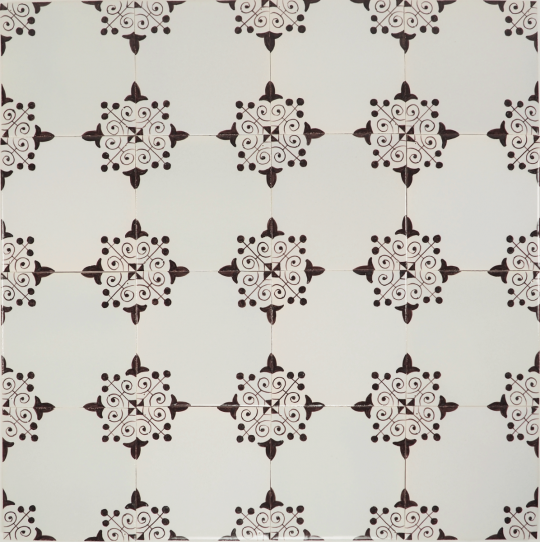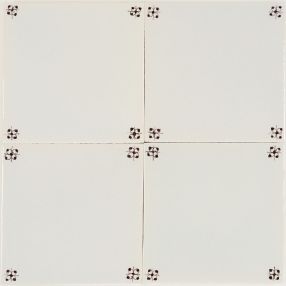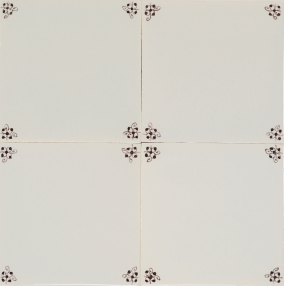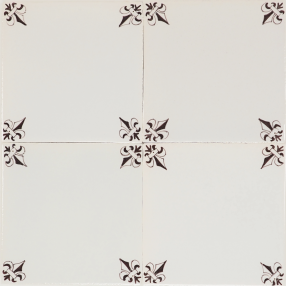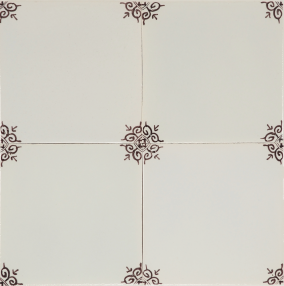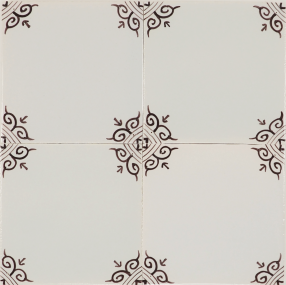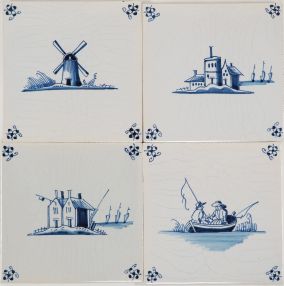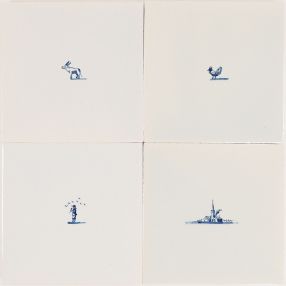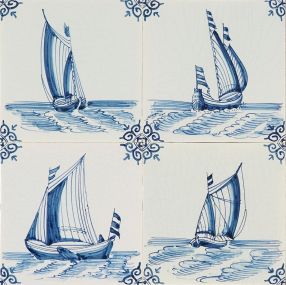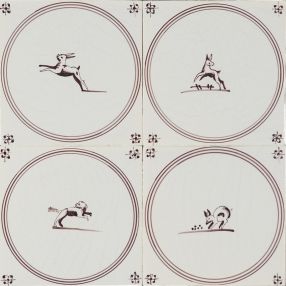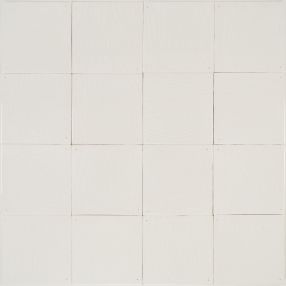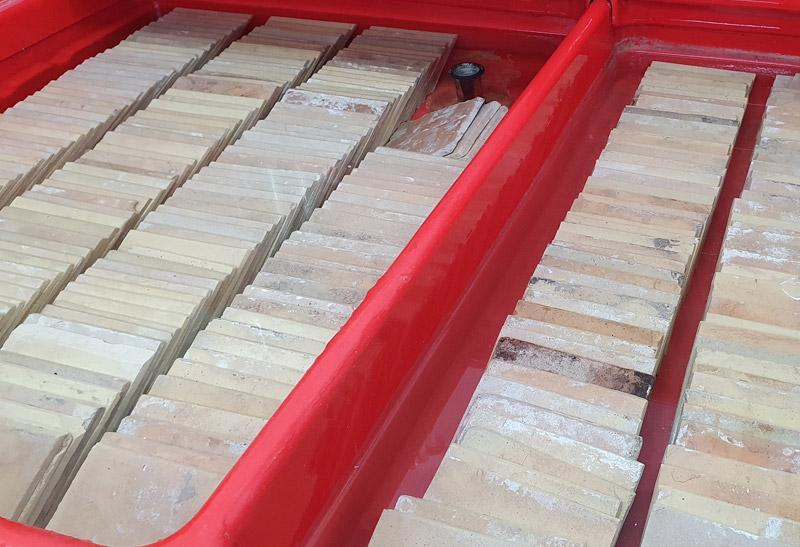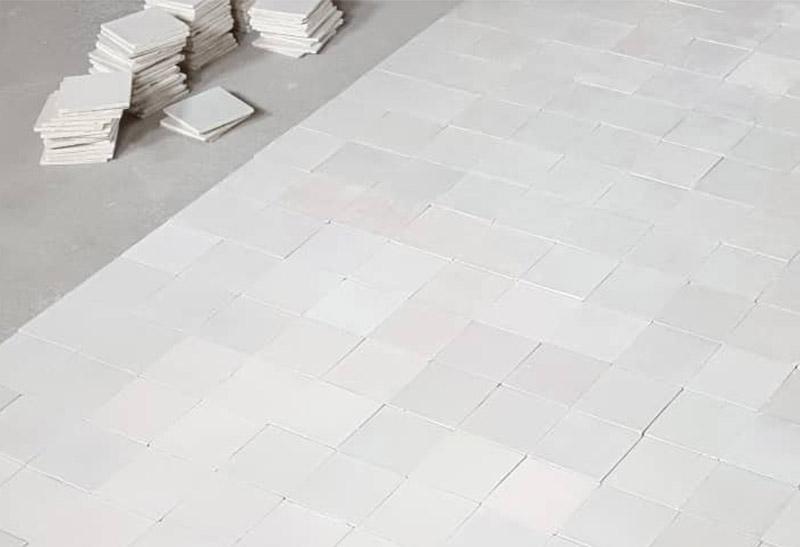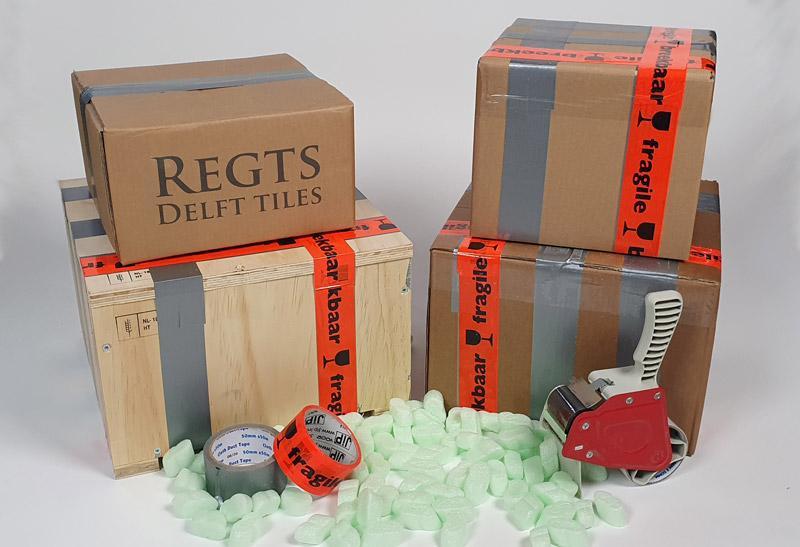Overview
PCM-30 – Three-dot
The Three-dot corner motif is available in Delft blue, manganese, or custom colors on request. You can pair these with plain tiles, decorated tiles, or entirely on its own, and can also be applied to any tile in our decorated series. When these tiles are put together, the painted leaves connect to form a rhythmic, symmetrical pattern that brings movement to the overall layout.
The tiles shown in the photo are painted in manganese, on our Grey mix base and with pinholes, but we can adjust and add any additional details upon request. Each tile is hand-painted, ensuring every piece is unique and carefully crafted.
Would you like to see a tile before placing a larger order? Order a sample from this series [here].
Historic design
The Three-dot motif is a decorative take on the classic ox-head design, with added layers of meaning. The three bold dots symbolize the trinit, often interpreted as the Father, Son, and Holy Spirit, or even the three stages of life. Leaf elements on either side line up across neighboring tiles, forming full leaves that add flow and rhythm to the surface. It's larger and more detailed than most corner motifs, which makes it stand out with its rich symbolism and eye-catching design, making it a great fit for both traditional and modern spaces.
Pinholes in the corners
Pinholes were part of the tile production process before 1860. A wooden board was used to stabilize the clay during cutting, leaving small pin marks, typically two, three, or four. This enhancement can be added to these tiles to recreate this authentic imperfection, contributing to their historic look and feel.
Crackled finish
Crazing refers to the fine network of hairline cracks that appear over time on antique ceramics, including Delft tiles. It occurs naturally with age, but we offer it as an optional finish to evoke the same aged appearance. If you're looking for a more antique, timeworn look, the crackled finish is a perfect match for this series.
How to order these tiles?
You can request a quote on this page or contact us through our contact page by filling out the contact form or sending us an email.
Product disclaimer
These Delft tiles are produced using traditional methods, leading to slight variations in color, size, and design. These natural differences enhance their authenticity and character. While not machine-made to uniform precision, each tile meets high-quality standards and is suitable for many indoor installations. With proper care, these tiles can last for decades.
Buyers information
Specifications
| Inventory number | PCM-30 (manganese) |
|---|---|
| Tile type | Wall tile |
| Tile size (approx.) | 13 by 13 cm's / 5.1" by 5.1" |
| Tile thickness (approx.) | 0.7 cm's / 0.3" |
| Quantity per M2 / SF | 60 tiles per m2 / 5.5 tiles per SF |
| Decoration technique | Hand-painted |
| Shade(s) of white | Photos show the 'Grey mix', but you are free to choose to work with different shades or mixes. |
| Shade consistency | Read more about this on the product page of each shade of white. |
| Decoration colour | Blue or manganese. Custom on request. |
| Corner motif | Three-dot (PCM-30) |
| Suitable for | Walls, kitchens, backsplashes, ceilings, fireplace surrounds, fireplace interior (when not exposed to open fire), bathrooms, wet-rooms. |
| Not suitable for | Floors, open fire, outdoors and swimming pools. |
| Sealer | The tiles do not require a sealer from a functionality perspective. In wet rooms one may decide to use a sealer to prevent natural crazing. |
| Pricing | Per tile. |
| VAT and/or Import duties | Prices of the reproduction tiles are excluding 21% VAT (only applies to private individuals buying from within the European Union). Any order from outside the European Union is without VAT, but customs will charge VAT and/or import duties instead. |
| Made in | the Netherlands, by Poarte |
| Installation guide | Click here to download |
About Regts - Delft Tiles
We are a family firm specialized in Delft tiles. Our stock covers the entire production period, which started around 1570 and ended just after 1900. If you are interested in working with us, please always feel free to get in touch.About usContact us


 10 out of 10
10 out of 10